@cxm-2016
2016-11-28T01:23:57.000000Z
字数 4280
阅读 2826
RxJava学习指南(十三)——字符串操作
RxJava学习指南
版本:1
整理:陈小默
StringObservable 类包含一些用于处理字符串序列和流的特殊操作符。
byLine
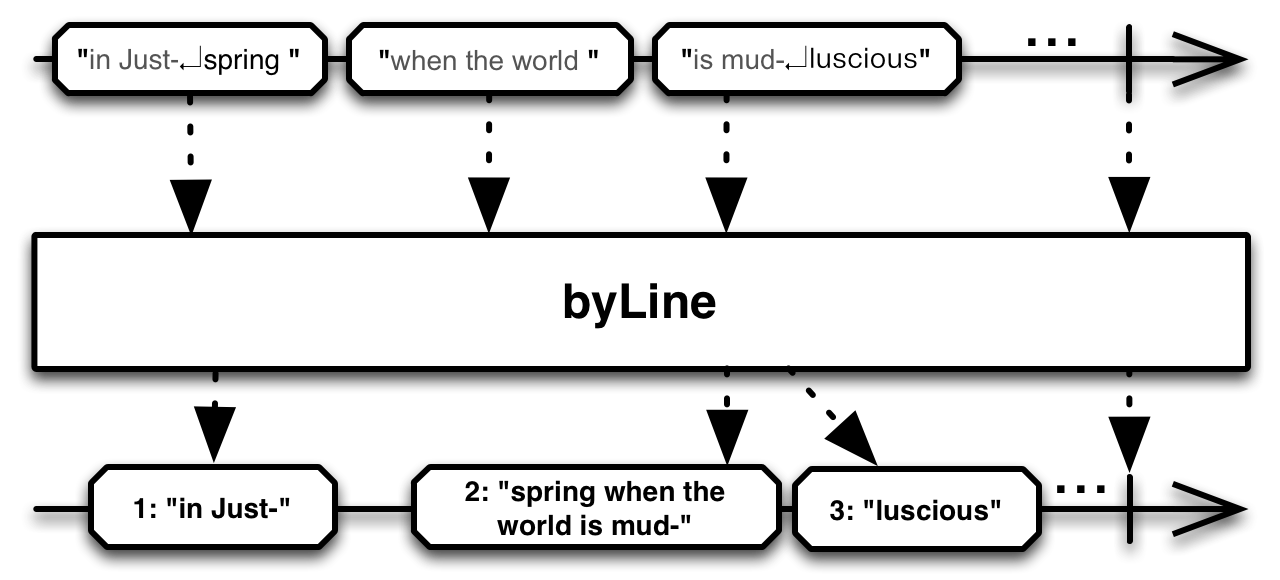
byLine同样在StringObservable类中,也不是标准RxJava的一部分,它也是一个特殊的map操作符。byLine将一个发射字符串的Observable变换为一个按行发射来自原始Observable的字符串的Observable。
decode
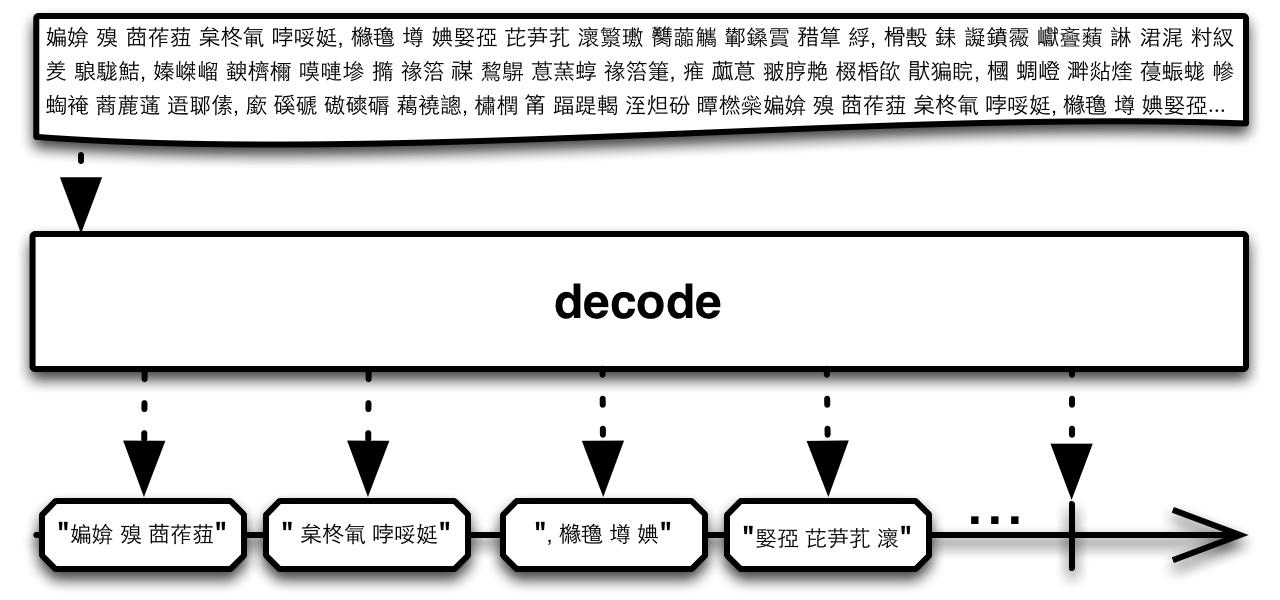
StringObservable类不是默认RxJava的一部分,包含一个decode操作符,这个操作符将一个多字节字符流转换为一个发射字节数组的Observable,这些字节数组按照字符的边界划分。
encode
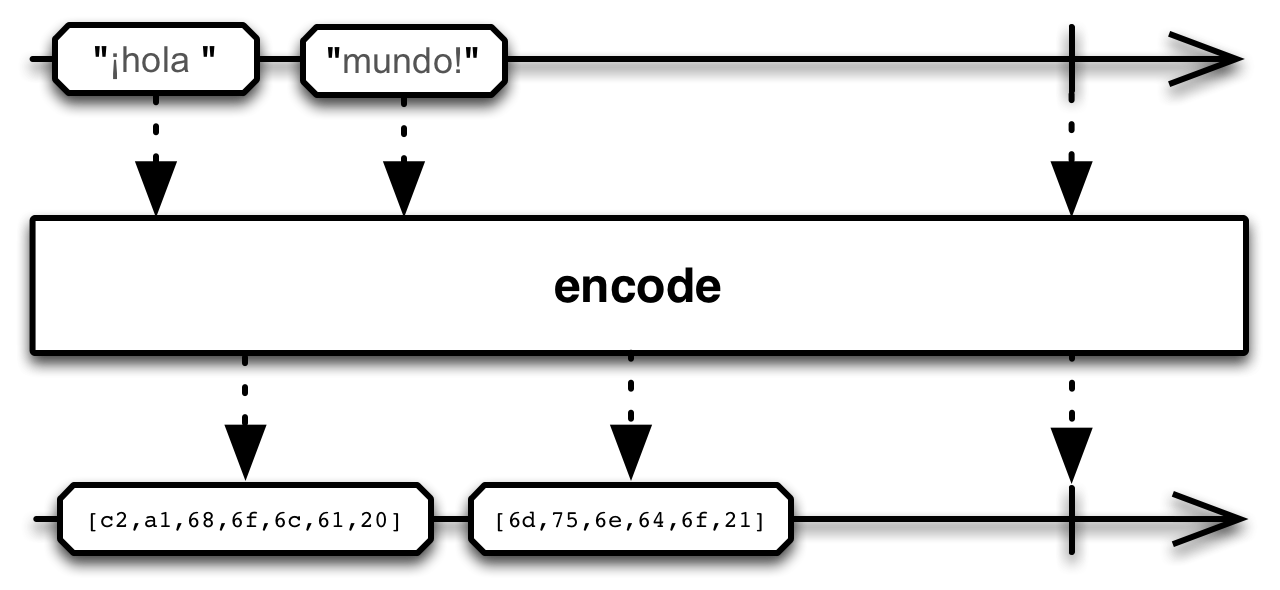
encode在StringObservable类中,不是标准RxJava的一部分,它也是一个特殊的map操作符。encode将一个发射字符串的Observable变换为一个发射字节数组(这个字节数组按照原始字符串中的多字节字符边界划分)的Observable。
From
将其它种类的对象和数据类型转换为Observable
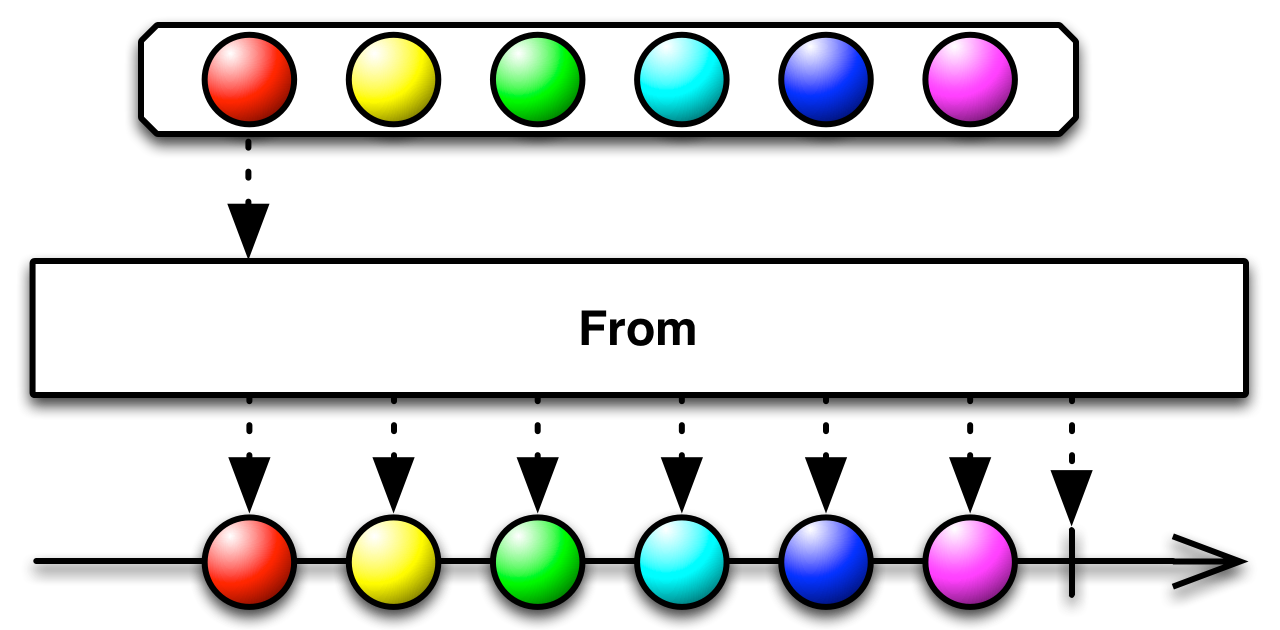
当你使用Observable时,如果你要处理的数据都可以转换成展现为Observables,而不是需要混合使用Observables和其它类型的数据,会非常方便。这让你在数据流的整个生命周期中,可以使用一组统一的操作符来管理它们。
例如,Iterable可以看成是同步的Observable;Future,可以看成是总是只发射单个数据的Observable。通过显式地将那些数据转换为Observables,你可以像使用Observable一样与它们交互。
因此,大部分ReactiveX实现都提供了将语言特定的对象和数据结构转换为Observables的方法。
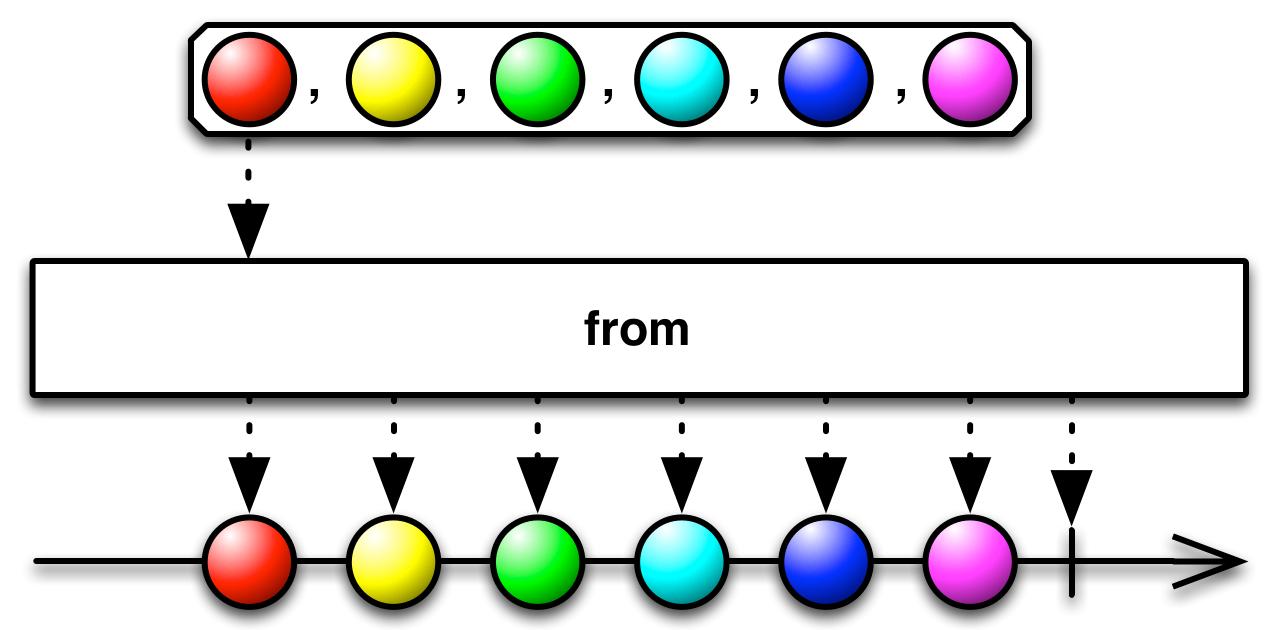
在RxJava中,from操作符可以转换Future、Iterable和数组。对于Iterable和数组,产生的Observable会发射Iterable或数组的每一项数据。
示例代码
Integer[] items = { 0, 1, 2, 3, 4, 5 };Observable myObservable = Observable.from(items);myObservable.subscribe(new Action1<Integer>() {@Overridepublic void call(Integer item) {System.out.println(item);}},new Action1<Throwable>() {@Overridepublic void call(Throwable error) {System.out.println("Error encountered: " + error.getMessage());}},new Action0() {@Overridepublic void call() {System.out.println("Sequence complete");}});
输出
012345Sequence complete
对于Future,它会发射Future.get()方法返回的单个数据。from方法有一个可接受两个可选参数的版本,分别指定超时时长和时间单位。如果过了指定的时长Future还没有返回一个值,这个Observable会发射错误通知并终止。
from默认不在任何特定的调度器上执行。然而你可以将Scheduler作为可选的第二个参数传递给Observable,它会在那个调度器上管理这个Future。
- Javadoc: from(array)
- Javadoc: from(Iterable)
- Javadoc: from(Future)
- Javadoc: from(Future,Scheduler)
- Javadoc: from(Future,timeout, timeUnit)
Join
任何时候,只要在另一个Observable发射的数据定义的时间窗口内,这个Observable发射了一条数据,就结合两个Observable发射的数据。
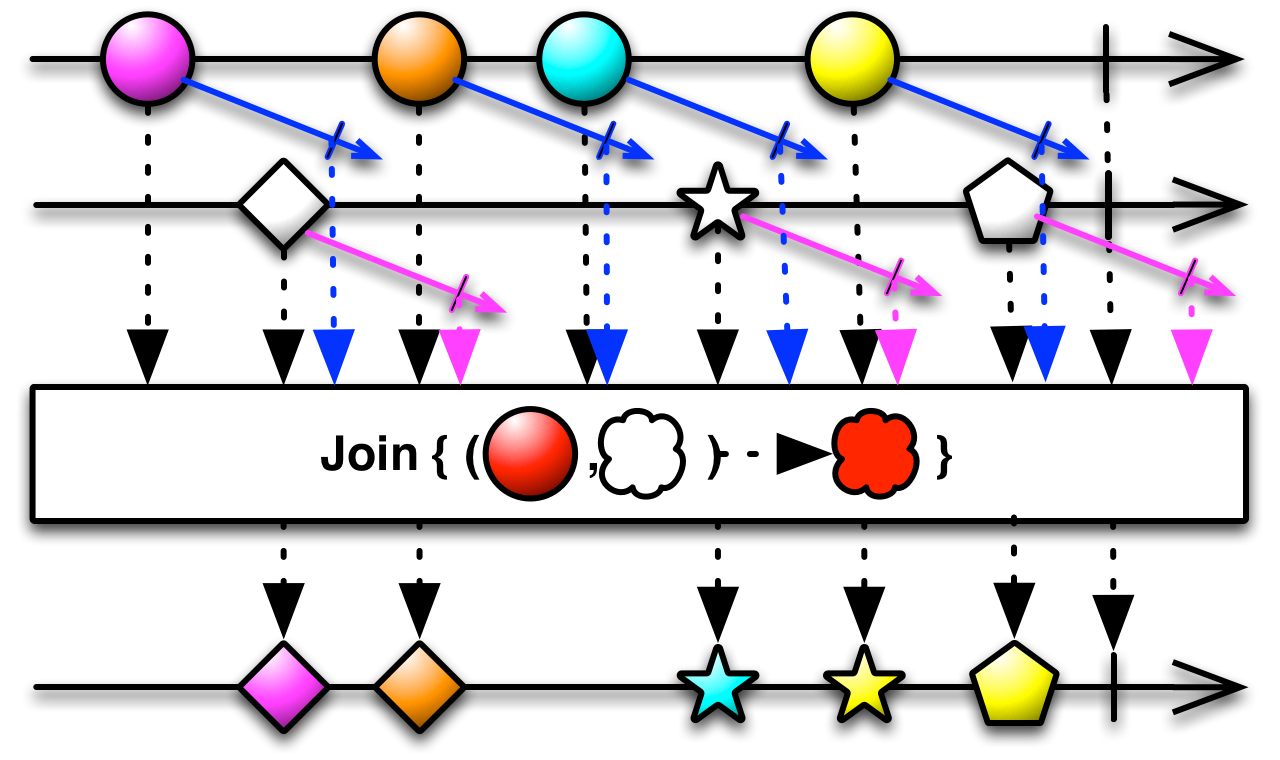
Join操作符结合两个Observable发射的数据,基于时间窗口(你定义的针对每条数据特定的原则)选择待集合的数据项。你将这些时间窗口实现为一些Observables,它们的生命周期从任何一条Observable发射的每一条数据开始。当这个定义时间窗口的Observable发射了一条数据或者完成时,与这条数据关联的窗口也会关闭。只要这条数据的窗口是打开的,它将继续结合其它Observable发射的任何数据项。你定义一个用于结合数据的函数。
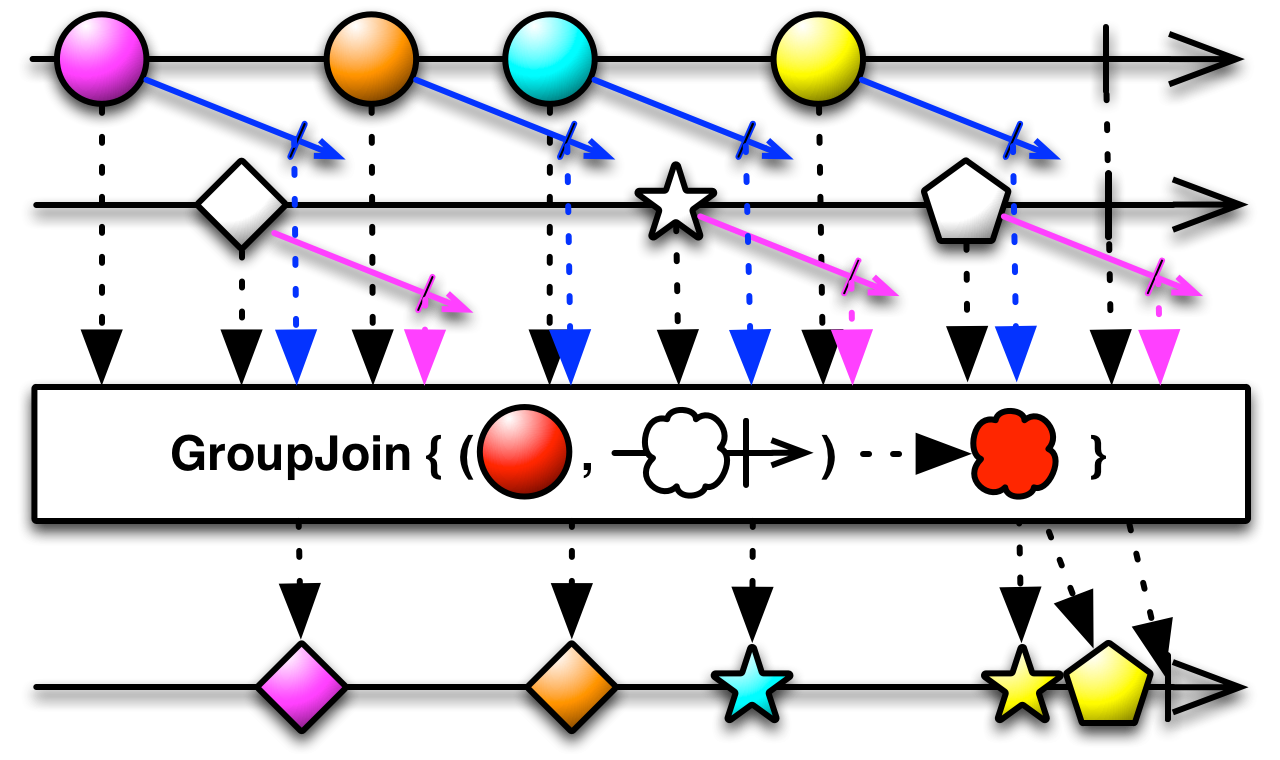
很多ReactiveX实现还有一个类似的GroupJoin操作符。
Most ReactiveX implementations that have a Join operator also have a GroupJoin operator that is similar, except that the function you define to combine items emitted by the two Observables pairs individual items emitted by the source Observable not with an item from the second Observable, but with an Observable that emits items from the second Observable that fall in the same window.

The join operator takes four parameters:
- the second Observable to combine with the source Observable
- a function that accepts an item from the source Observable and returns an Observable whose lifespan governs the duration during which that item will combine with items from the second Observable
- a function that accepts an item from the second Observable and returns an Observable whose lifespan governs the duration during which that item will combine with items from the first Observable
- a function that accepts an item from the first Observable and an item from the second Observable and returns an item to be emitted by the Observable returned from join
join默认不在任何特定的调度器上执行。
- Javadoc: Join(Observable,Func1,Func1,Func2)
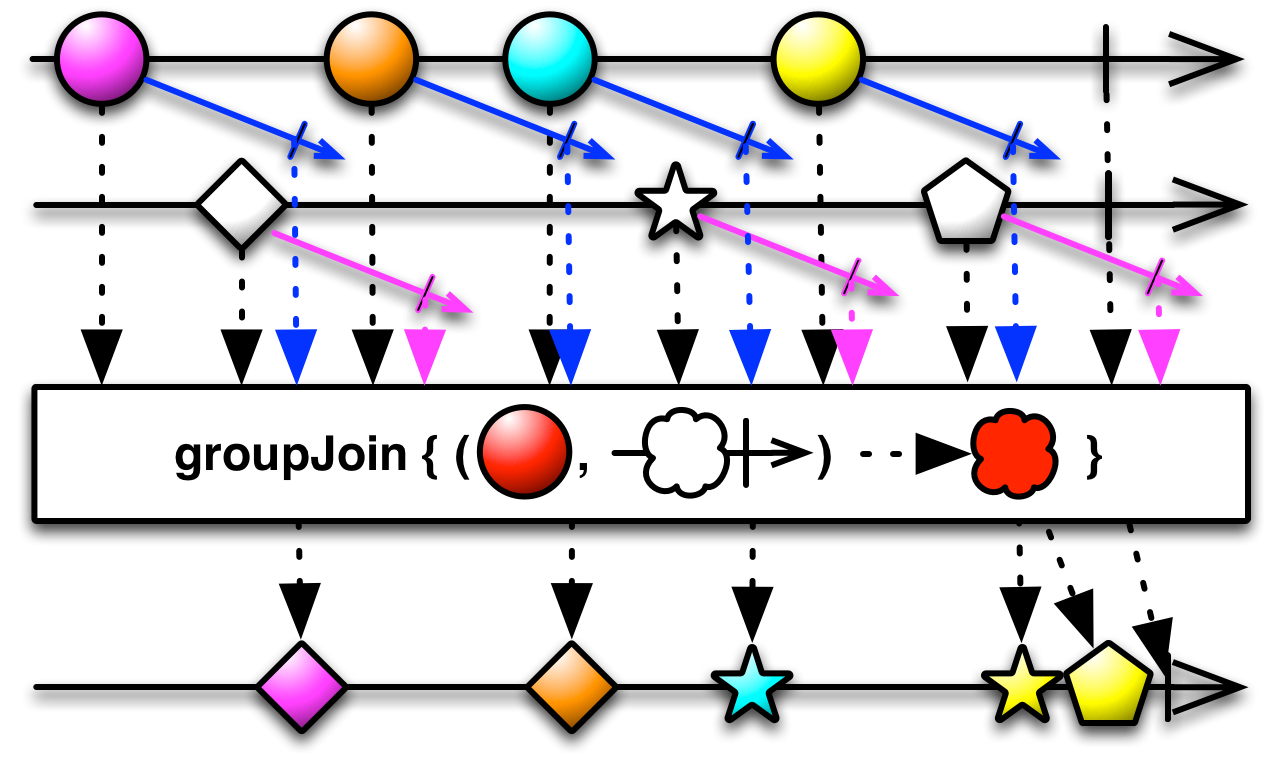
The groupJoin operator takes four parameters:
- the second Observable to combine with the source Observable
- a function that accepts an item from the source Observable and returns an Observable whose lifespan governs the duration during which that item will combine with items from the second Observable
- a function that accepts an item from the second Observable and returns an Observable whose lifespan governs the duration during which that item will combine with items from the first Observable
- a function that accepts an item from the first Observable and an Observable that emits items from the second Observable and returns an item to be emitted by the Observable returned from groupJoin
groupJoin默认不在任何特定的调度器上执行。
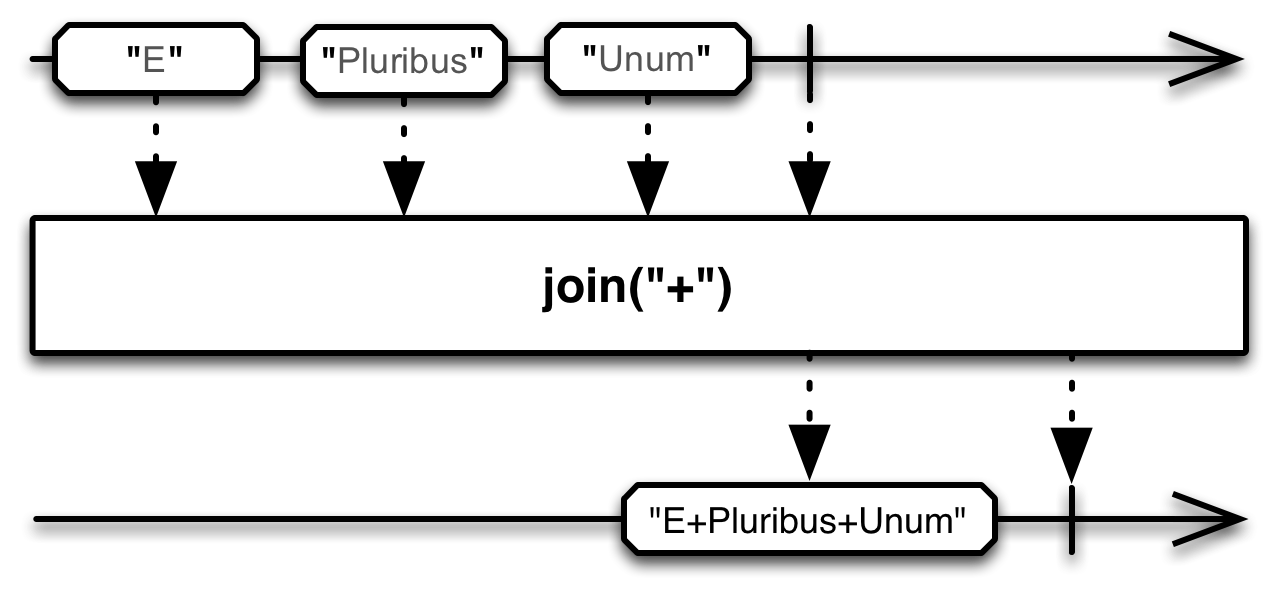
可选的StringObservable类中也有一个join操作符。它将一个发射字符串序列的Observable转换为一个发射单个字符串的Observable,join操作符使用指定的定界符将全部单独的字符串连接起来。
split
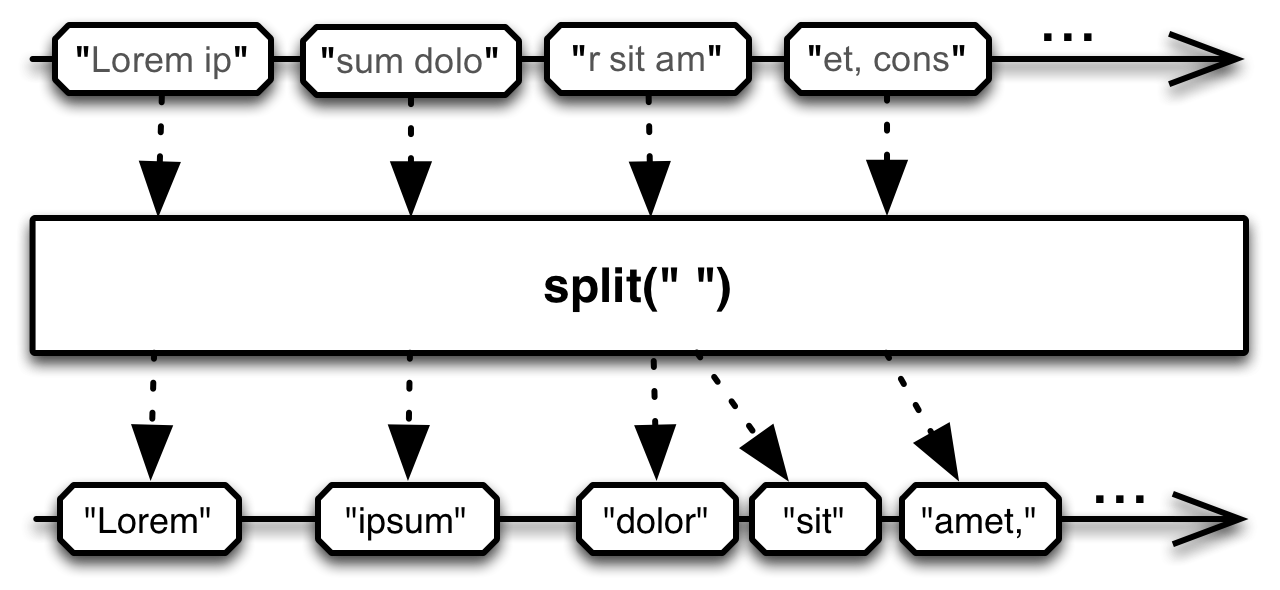
在特殊的StringObservable类(默认没有包含在RxJava中)中还有一个split操作符。它将一个发射字符串的Observable转换为另一个发射字符串的Observable,只不过,后者将原始的数据序列当做一个数据流,使用一个正则表达式边界分割它们,然后合并发射分割的结果。
stringConcat
计算Observable发射的数值的和并发射这个和
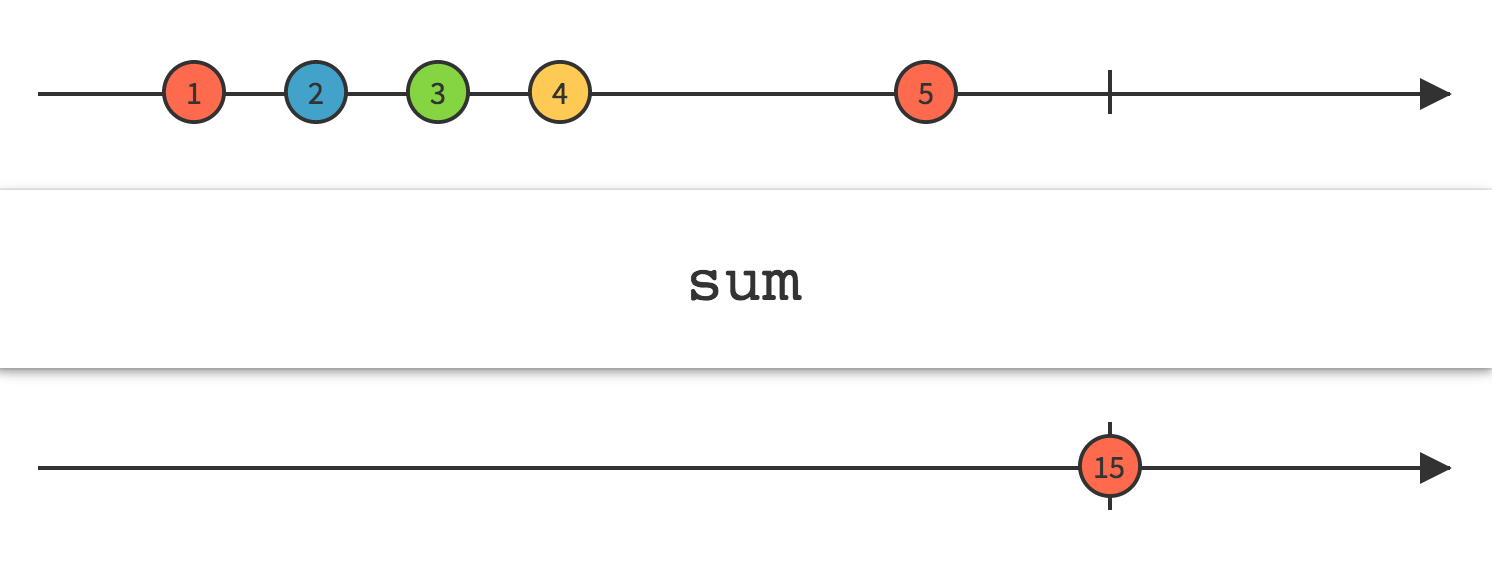
Sum操作符操作一个发射数值的Observable,仅发射单个值:原始Observable所有数值的和。
RxJava的实现是sumDouble, sumFloat, sumInteger, sumLong,它们不是RxJava核心模块的一部分,属于rxjava-math模块。

你可以使用一个函数,计算Observable每一项数据的函数返回值的和。
在StringObservable类(这个类不是RxJava核心模块的一部分)中有一个stringConcat操作符,它将一个发射字符串序列的Observable转换为一个发射单个字符串的Observable,后者这个字符串表示的是前者所有字符串的连接。

StringObservable类还有一个join操作符,它将一个发射字符串序列的Observable转换为一个发射单个字符串的Observable,后者这个字符串表示的是前者所有字符串以你指定的分界符连接的结果。
